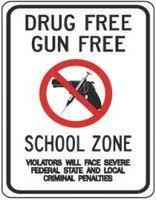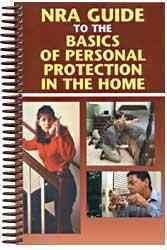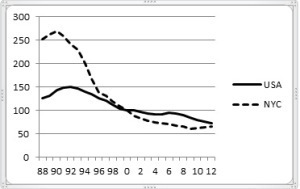Michael R. Weisser's Blog, page 137
March 25, 2014
The New Georgia Gun Law: Much Ado About…Nothing.
You know that gun control is no longer an issue, either pro or con, when both sides in the gun debate try to make you believe that something big has happened on the legislative front when nothing of any real importance happened at all. I’m referring to the gun law just passed in Georgia which is awaiting Governor Nathan Deal’s expected signature, a law described by the New York Times as one of “breathtaking sweep” and by the NRA as a “historic victory for the 2nd Amendment.”
Since I really do believe in evidence-based discussion about guns, I took the trouble to read HB60, as the new law is known. If this law represents a ‘historic victory’ for the 2nd Amendment, the NRA better find someone else to defend the beloved Constitutional rights of gun owners. On the other hand, if the editors of Mother Jones really believe that this new law will result in guns being “everywhere” in Georgia, then there must be some place named Georgia other than the state where this law was just passed.
Here’s what the bill basically does: (1). It allows guns to be carried in places where liquor is served, which previously had been off-limits for guns. (2). It also allows guns to be carried in churches which, like restaurants and bars, were also off-limits for guns. (3). It allows guns to be carried in certain non-secure areas of airports, which is really funny since Atlanta’s airport was ranked #1 nationally in the number of guns confiscated in 2013. Since most guns are confiscated as people move through the security zone, the new law will probably result in the number of Atlanta confiscations going up!
The law also makes some minor changes in the application process, a few new do’s and don’ts when it comes to hunting and, what has become requisite in virtually every gun law passed since Sandy Hook, some language allegedly making it easier to pass information about mentally ill people to the feds. But if you take the time to read the new law and go back and read the current law as well, you discover that most of these “historic” changes don’t mean much at all.
First of all, the law about carrying guns into liquor-serving establishments does not prevent any bar or restaurant owner from declaring his premise off-limits to guns. All he has to do is stick a sign in the window or simply stand at the door and tell patrons that he would appreciate it if they left their guns in their cars. As for bringing guns into houses of worship, this is an ‘opt-in’ law which means that the congregation has to agree to let parishioners bring their guns into the building before anyone can have a conversation with the Almighty while sitting on their Glock.
Finally, while Georgia does not require a permit in order to purchase or own a gun, it does require a background check and prints in order to carry a weapon, and the issuance of said license can be denied if the licensing authority (who happens to be the County Probate Judge) decides that the candidate, even if he meets the legal requirements, is “not of good moral character.” You’ll have to read down to Page 16 (Section 1-7) to find this little gem and a few pages later you’ll learn that someone who is denied a carry license can appeal the decision and will then appear at a hearing – before the same judge! And if the judge prevails at the hearing? That’s it. The law makes no mention of an appeal. Well, I guess you can move to another County.
I’m not an attorney and certainly no expert in constitutional law. But it seems to me that if a Probate Judge or anyone else can determine someone’s fitness to carry a gun based on something as vague as “moral character,” then this law hardly enshrines 2nd Amendment rights. At the same time, the fact that I can pee in an airport toilet without first unhooking my holster doesn’t seem much of an indication that guns will soon be found in every nook and cranny of the Peach State. Like I said, right now there’s just not a lot of noise being made about guns.


March 4, 2014
Even Though There Are More Good Guys in Arizona, The Bad Guys Are Winning
Everyone is aware of the NRA’s argument that the only thing that will stop a bad guy with a gun is a good guy with a gun. They’ve been saying it for years, but they began screaming it out from the rooftops after Sandy Hook. And even though we seem to keep hearing about good guys who shoot other good guys, like the murder of Chad Oulson in a Florida movie theater by the ex-cop Curtis Reeves, such incidents are dismissed by the pro-gun crowd as aberrations or mistakes that should have no bearing on whether every good guy in America should be walking around with a gun.

Jan Brewer
But a group of ER and Trauma physicians have just released a report on the effect of a 2010 law in Arizona which basically made it a lot easier for all those good guys in the Grand Canyon State to walk around with a gun. Prior to 2010, gun ownership in Arizona did not involve state or local approval, and guns could be privately transferred without a background check. But carrying a concealed weapon in Arizona did require a police-issued permit, and part of the process also involved required proficiency training in how to use the gun.
The new law, SB-1108, was signed by Governor Brewer and went into effect in 2010. The law abolished the permit requirement for carrying a concealed weapon and also abolished the necessity to even prove that you knew anything about how to operate the gun. And since Arizonans are free to sell or transfer handguns privately without a background check, this means that virtually anyone regardless of their legal or proficiency background can join up with the good guys and carry a gun.
Talk about fulfilling the fondest wishes of the NRA. Finally people like John Lott, Gary Kleck and all the other NRA sycophants who have been telling us for twenty years that more guns equals less crime have an opportunity to prove that what they have been saying is really true. But there’s only one little problem. The research that was just published shows that the good guys with those guns haven’t been doing a very good job of protecting us from crime.
The researchers looked at gun injuries and deaths in Tucson over the four-year period between 2008 and 2012, in order to compare gun violence for the same time-period before and after SB-1108 was passed. And what they found was that “gun-related injuries and deaths increased in southern Arizona, mostly owing to an increase in gun-related homicides.” This information agrees with numerous studies over the years that correlate gun violence with the presence of guns, but those studies rely on data about gun ownership in general, not whether there exists a concordance between gun violence and guns that are being toted around concealed.
Now it turns out that the overall homicide rate went down in Tucson between 2010 and 2012, which seems to support the NRA’s position about the value of good guys having more guns. But there’s only one little problem: all the other categories of violent crime in Tucson went up and they didn’t go up by just a little bit. According to the FBI, the robbery rate went up 13%, aggravated assault increased 11%, and the overall violent crime rate in those two years also increased by 13%. Statewide, violent crime went up only 4%, but it sure didn’t go down.
So where are all those good guys with guns who can now walk around cities like Tucson and protect its citizens from any bad guy carrying a gun? Arizona is the first state that has removed virtually all legal and training requirements for people who want to protect themselves and others with a gun. So far it doesn’t look like the good guys are up to the task.


February 28, 2014
An Inmate Takes Over The Asylum: Rand Paul Says Guns Aren’t A Public Health Issue
This week President Obama submitted his nomination for Surgeon General to the Senate, a Yale-trained physician named Vivek Murthy, and Rand Paul announced he had put a “hold” on the nomination because of Murthy’s opposition to the 2nd Amendment and his membership in organizations like The Center for American Progress which want to impose stricter controls over guns.
Paul is trying to ferret out every conservative and Tea Party vote to help him win the 2016 Republican presidential nomination, so it’s not surprising that he would pander to the views of the NRA, which immediately sent a message to the Senate supporting Senator Paul’s stand. But Rand Paul is also a licensed physician, an opthamologist, so you think he would at least have the honesty to admit that his declaration that guns do not represent a “public health issue” is nothing more than election-year nonsense even before the election year has arrived.
But why let facts stand in the way of your opinions, particularly when you believe that the loonier your opinions, the better chance you have of ending up living at 1600 Pennsylvania Avenue for at least four years? The only problem is that if Paul really believes that guns aren’t a public health issue, then he’s woefully ignorant of the determinations made by his own medical profession whose uncontested views and guidelines on gun violence have been on public record for more than thirty years.
The CDC, which is required under law to define and track progress on issues that affect public health, has listed gun violence as an issue since the publication of ”Healthy people: the Surgeon General’s report on health promotion and disease prevention” in 1979. This publication, which is updated every ten years, defined gun violence as a public health issue because it was the major cause of homicides which are a significant part of a broad category of public health threats known as unintentional injuries and accidents, which also includes, among other health impairments, vehicular accidents, residential fires, drownings and physical assaults.
The interesting thing about gun violence, is that the two categories in which its occurrence is tracked by the CDC – firearm-related deaths and nonfatal firearm-related injuries – have each shown progress in the CDC report, as opposed to health threats like falls, child maltreatment, school physical education injuries and overall homicides, the last of which has moved further away from the targeted goal that was set in 1998.
If Rand Paul was really interested in making an honest contribution to the gun debate, he would cite the 2010 CDC Healthy People report as an example of how firearm owners are doing the right thing when it comes to safe use of their guns. Because that’s exactly what the CDC report says. But Paul isn’t interested in an honest debate, he’s trying to out-lunatic the lunatics in order to make sure that nobody else (example: Ted Cruz) can challenge him from the Right. Of course the NRA isn’t any more interested in injecting reality into the debate. I just received a fund-raising appeal from them telling me that gun ownership was heading towards Armageddon in 2014. Don’t worry, I get the same kind of emotion-laden appeals from Moms Demand Action for Gun Sense telling me that gun-carrying Americans are out of control.
I think it’s gotten to the point that you can’t talk about guns in rational terms. There’s too much at stake and what’s at stake is political ambition and money, lots of money, which is used to keep people’s minds focused on things that have noting to do with health, or safety or whether Americans should own guns.


February 23, 2014
School Shootings: Whose Numbers Do You Want To Believe?
Last week, the NRA’s favorite academic stooge, John Lott, exceeded even my expectations for the shabbiness of his research by publishing yet another screed on his favorite topic concerning the necessity to arm ourselves in order to protect each other from crime. In this case he was talking about guns in schools and he took aim at a new report from Bloomberg which claimed that there was an average of 3 gun shootings a month since the 2013 carnage at Sandy Hook. Here’s Lott’s criticism of the Bloomberg report:
”their statistics are not what they seem. Included in the numbers are suicides. Also included are late night shootings taking place in school parking lots, on their grounds or even off school property, often involving gangs. As “shootings,” they also include any incident where shots were fired, even when nobody was injured.”
This comment doesn’t tell us what Lott figured out about Bloomie’s report. It’s exactly what the report itself says. And it says it right up front. It says that it counted every time a gun went off in a school, whether someone was injured or not. It says that it included suicides as well as homicides. It says that it counted when shots were fired on school property even if the school-day had come to an end. Lott isn’t telling his readers anything they can’t find out by simply reading the first page (actually mostly the first paragraph) of the report itself.
 But why bother to read the report? After all, Lott has read it for you. And he’s now told you that the report is “misleading” because it includes suicides, after-school shootings and shootings where nobody was hurt. Now that would be “misleading” if the report simply announced that there had been 44 school shootings since Sandy Hook and Lott had actually done some real research to determine that what the report said was misleading or untrue. But Lott didn’t do any research at all. Like me, he just read the first page of the report.
But why bother to read the report? After all, Lott has read it for you. And he’s now told you that the report is “misleading” because it includes suicides, after-school shootings and shootings where nobody was hurt. Now that would be “misleading” if the report simply announced that there had been 44 school shootings since Sandy Hook and Lott had actually done some real research to determine that what the report said was misleading or untrue. But Lott didn’t do any research at all. Like me, he just read the first page of the report.
But Lott can’t just regurgitate what the Bloomberg report says and pretend he’s figured this out; he then has to throw in some of his own “research” to make his readers believe that he, as opposed to gun-grabbers like Bloomberg, has the inside track on the truth: “Contrary to what many people believe, high school shootings have been falling over the last two decades.” Well, that may or may not be true, if only because Lott’s source for this information, the National School Safety Center, uses the same newspaper and media sources (not law enforcement) that Bloomberg used for his report. And both the NSSC and Bloomberg admit that such data, by definition, is probably incomplete.
But notice that Lott wants you to believe that school shootings have declined even though he’s only counting shootings in high schools. nor do his numbers take suicides or shootings in elementary schools into account. So he takes a slice of what Bloomberg counted, comes up with a smaller number and announces that his number is less! And this isn’t shabby research? This isn’t pandering to the NRA crowd?
I’d love to get John Lott on a stage and have a serious and public debate with him about guns. For that matter, I’m willing to take on Lott and Mike Bloomberg at the same time. Because both of them are playing to audiences that aren’t interested in what the other side wants to hear. And both use limited and often misleading data to score points in what never seems to be a genuinely honest debate.
Let me tell you the real problem we have with school gun violence and you won’t hear this from Mike Bloomberg or John Lott or anyone else except me. The real problem is the number of kids who bring real guns into school but thank God they are taken away before a shot goes off. Ask any school safety administrator (as I have) when this pattern begins to appear and you’ll be told that it starts in middle school! That’s right: twelve-year-olds start bringing live guns into classrooms and showing them around. Twelve-year-olds. Think about that.


February 18, 2014
Homicide And Gun Ownership: Update, Comparisons and Strategies
Last week I submitted this article to The Journal of Criminology and they rejected it immediately without comment. But I thought you would like to read it anyway so here it is.
In 2011 Erin Richardson and David Hemenway published a painstakingly-researched article based on 2003 data comparing gun violence in OECD countries.1 One of their findings was that the U.S. gun homicide rate was nearly 20 times higher than the overall rate for other high-income countries. While they did not explicitly link elevated gun homicides in the U.S. to the prevalence of firearms in the civilian population, their findings have been utilized by virtually every gun control advocate to justify additional gun ownership restrictions, particularly in the wake of the Sandy Hook massacre in December, 2012.2 The purpose of this article is to update their data with more current information, as well as to determine whether the policy strategies being advanced to diminish gun harm aligns with the relevant data on gun violence.
The chart which follows contains updated (2010) data on national population, the number of guns in civilian hands, per capita civilian gun ownership and the gun homicide rate per 100,000.
Country
Population (000’s)
Civilian guns (000’s)
Per capita
Hom. Rate
Australia
22,065
3,250
14.7
0.11
Austria
8,389
2,500
29.8
0.18
Canada
34,126
9,950
29.1
0.5
Czech Repub.
10,519
136
1.2
0.12
Finland
5,363
2,400
44.7
0.26
France
65,031
19,000
29.2
0.22
Germany
81,776
25,000
30.5
0.2
Hungary
10,000
560
0.05
0.13
Iceland
315
90
28.5
0
Italy
60,463
7,000
11.5
0.36
Japan
127,450
710
0.005
0
Luxembourg
506
70
13.8
0.6
Netherlands
16,615
510
3
0.2
New Zealand
4,367
1,000
22.8
0.26
Norway
4,889
1,320
26.9
0.04
Portugal
10,637
2,600
24.4
0.48
Slovakia
5,430
450
8.2
0.18
Spain
46,070
4,500
9.7
0.15
Sweden
9,378
2,800
29.8
0.19
UK
62,271
4,060
6.5
0.05
TOTAL OECD
585,660
87,906
15
0.17
USA
309,326
270,000
87.2
3.58
Notwithstanding changes in some specific values, the 2010 data shows a very similar profile to what Richardson and Hemenway discovered for 2003, namely, a correlation between gun ownership and gun homicide rates on the one hand, and a continued and significant disparity between the United States and other economically-advanced countries on the other. Gun homicide rates per 100,000 range between null for Japan and Iceland up to .48 for Portugal, with the mean of .24 or above only being experienced by countries with a per capita gun ownership of at least 1 in 5. There were other countries (Sweden, Norway, Iceland, France) whose per capita ownership also exceeded 1 in 5, but they were still below the mean for gun homicides. The correlation for gun homicide and median per capita gun ownership, on the other hand, does not appear to be as strong.
Both the OECD and the U.S. gun homicide rate slipped between 2003 and 2010 (15 and 13 percent respectively) but the significant gap in gun homicide between the United States and other OECD countries remained basically unchanged. To put this differential in a somewhat more graphic context, in the 22 countries above there were 12,070 homicide victims in 2010, of whom 11,078, or 92%, lived in the United States. This is a remarkable statistic and there is no other form of violent death in which the disparity between the United States and its OECD cohorts displays even a fraction of this difference.3
The consistency of the data from 2003 and 2010 makes it difficult to ignore the connection between gun prevalence and gun homicide in the United States. But the data, suggestive and comprehensive as it is, does not yield the kind of information that would allow us to align it properly with strategies designed to diminish the harm caused by guns. In particular, the evidence both for the U.S. and elsewhere is either silent or unreliable on defining the type of guns that are used in felony assaults.4 We can estimate this data from FBI-Uniform Crime Reports as well as other sources, and it appears to be the case that handguns (pistols, revolvers), as opposed to long guns (shotguns, rifles) are used in perhaps 90% of gun felony crimes.5
If we deduct estimates of long gun ownership from the overall total of guns circulating amongst civilians in the United States, the per capita number for U.S. gun ownership would drop from its current 87 to somewhere below 40, placing us within the “normal” boundaries of gun ownership within the OECD. What this simple exercise affirms is that we are not the only advanced country to allow its citizens access to small arms, but we are the only country that gives equal opportunity to acquiring both long guns and hand guns. The discussion about guns and homicide should focus on the prevalence of handguns, and not on small arms in general. Strategies to curb gun violence in the U.S. by controlling access to all types of small arms do not really catch the issue which needs to be addressed.
REFERENCES
Erin G. Richardson & David Hemenway, “Homicide, Suicide and Unintentional Firearm Fatality: Comparing the United States with other High-Income Countries, 2003,” The Journal of Trauma, Injury, Infection, and Critical Care, Volume 70, No. 1 (January 2011), 238-243.
See, for example, http://www.bradycampaign.org/about-gun-violence and http://www.vpc.org/studies/moreguns.pdf.
The U.S. auto fatality rate per 100,000 is lower than rates recorded for many OECD countries; cf. http://www.internationaltransportforum.org/irtadpublic/pdf/risk.pdf.
Of the OECD countries compared in this study, less than 20% provide breakdown between long guns and hand gun ownership. According to the ATF, 2010 was the first year since records have been kept (mid-80’s) when handguns constituted more than 50% of all guns manufactured or imported into the U.S. Cf. Firearms Commerce in the United States, Exhibits 1 and 3.
Reliable estimates for 2010 in: http://www.fbi.gov/about-us/cjis/ucr/crime-in-the-u.s/2010/crime-in-the-u.s.-2010/tables/10shrtbl08.xls. See Table 6.


February 17, 2014
They Keep Standing Their Ground In Florida And People Keep Getting Shot
Last week Michael Dunn, a dapper, 47-year old software engineer was hoping that his trial would end up the same way as George Zimmerman’s trial ended up but no such luck. Even if he’s never convicted of killing Jordan Davis, he could end up being sentenced to 60 years in jail because the jury decided that the fact that he kept shooting at the truck as it pulled away from him meant that he was trying to kill the other passengers who, it turned out, were armed with nothing more than big mouths.
What probably cooked Dunn’s goose, in addition to the forensic evidence which indicated that Davis was shot while sitting in his vehicle, not, as Dunn claimed, after he got out of the truck and came towards him in a menacing way, was the fact that he drove away from the scene, spent the night in a motel and then drove back home before contacting anyone to talk about the incident. Not much different, when you stop and think about it, from the way that Curtis Reeves, the 71-year old ex-cop from Tampa pulled out a gun, shot and killed Chad Oulson in a movie theater and then calmly sat back down and waited for the cops to walk in, surround him and take away his gun.
 Even the National Rifle Association, which champions the ‘stand your ground’ law that has been cited by lawyers both for Dunn and Reeves, draws the line when it comes to how someone should behave if they defend themselves with a gun. Their course books on self-defense both in and outside the home specifically advise that anyone who is involved in a shooting incident should remain on the scene, contact law enforcement, separate themselves from any weapon, and make sure that they clearly state their name and their reasons for calling 911.
Even the National Rifle Association, which champions the ‘stand your ground’ law that has been cited by lawyers both for Dunn and Reeves, draws the line when it comes to how someone should behave if they defend themselves with a gun. Their course books on self-defense both in and outside the home specifically advise that anyone who is involved in a shooting incident should remain on the scene, contact law enforcement, separate themselves from any weapon, and make sure that they clearly state their name and their reasons for calling 911.
In both the shootings in Florida, Dunn and Reeves didn’t follow any one of those rules. Neither contacted law enforcement directly after the incident, neither separated themselves from their guns, neither did anything that would have indicted even their awareness that something like an emergency existed based on what they had done. Dunn not only waited more than 24 hours to contact anyone, but that gave him enough time to concoct a phony story that even his fiancee, who was on the scene, couldn’t support when she took the stand.
I’m beginning to wonder whether we have any idea about what’s at stake when we give civilians the right to walk around with a gun. Just this week the 9th Circuit in California ruled that the state’s concealed carry law violated the 2nd Amendment because it denied residents the ability to carry a gun outside the home. And while it will ultimately be up to the Supreme Court to decide whether the 2nd Amendment really does apply beyond the limits of one’s residence (in fact the Heller decision speaks only to possession of firearms within the home) the bigger issue is how we behave once the Constitutional right to self-protection is actually invoked.
Because we can talk and argue all we want about whether Americans are safer if everyone walks around with a gun. But once the gun appears and the trigger is pulled, then what happens has nothing to do with the Founding Fathers. It’s all about something called common sense and nobody should be protected by the Constitution if they fail to understand what that’s all about.


February 14, 2014
What To Do About Guns? Let’s Start With The Facts
Every time gun debate breaks out, the two sides take positions that are simply Alice in Wonderland-like in how far they are divorced from real facts. The NRA argues that the more guns are owned and carried by civilians, the safer we become. It’s errant nonsense, and the same people who believe it and who publish “research” to prove it will also tell you that they can prove that elements in the U.S. government helped bin Laden blow up Towers One and Two. Not to be outdone in terms of flights from reality, the gun control crowd insists that banning semi-automatic rifles that look like AR-15 military weapons will have a significant impact on gun violence, despite the fact that of the 11,000+ people killed each year with guns, less than 300 deaths can be blamed on rifles of all types, let alone the so-called “assault” guns with their high-capacity mags. By the way, since the overwhelming majority of shootings occur with the discharge of only one round, I have never understood the fetish that exists among the gun control advocates to ban hi-cap mags.
 I agree that it’s time to get serious about gun violence but the only way I know to get serious about anything is to start with the facts. And here is what we really and truly know:
I agree that it’s time to get serious about gun violence but the only way I know to get serious about anything is to start with the facts. And here is what we really and truly know:
Most (90%) people who use guns in criminal ways have a prior history of criminal behavior.
Most (80%) individuals who use guns to commit suicide had contact with a medical professional and expressed their feelings of mental distress within 30 days or less of when they killed themselves.
Most (70%+) of all gun homicides take place in inner-city, minority neighborhoods.
So there you have it or, as Jack Friday used to say, just the facts ma’am, just the facts. Yea, yea, yea, I know all about the importance of gun safety, but if every single gun in the United States were locked up every single night, the overall deaths from accidental shootings would decline by a whopping 3 percent! As for expanding background checks to be sure that guns only moved from good guys to other good guys; people who acquired a gun legally aren’t disposed to give it to a bad guy and someone who acquired a gun “off paper” isn’t about to walk into a gun shop and fill out a Form 4473.
But there are some sensible things we can do to respond to the facts stated above. The cops could stop spending so much time issuing summonses for jaywalking or rousting young teens for hanging out on street corners and instead get in the face of every known felon and ask them if they are carrying a gun. It seems to be working in New York, why shouldn’t it be adopted everywhere else? As for people with mental issues, the NRA should drop its cynical and stupid opposition to the right of physicians to inquire and report on gun ownership in instances where the patient displays a “clear and obvious” threat to himself or others. And what could be a more obvious threat than someone reporting thoughts of suicide who also happens to own a gun? Finally, the gun control folks need to drop their politically-correct attitude towards the individuals and groups who commit most of the felony gun violence and figure out what to do to keep guns out of their hands. It’s just too bad if most of these people belong to certain specific, minority groups since we are always constrained to discuss or even describe things in racial terms. But the victims of these killers come from the self-same minority populations and we certainly shouldn’t be afraid to speak up in their stead.


February 13, 2014
Another State Requires Live-Fire In Order To Carry A Gun
Last time I looked, only a minority of states required that a citizen who wants to walk around with a concealed weapon actually know how to use it. And the only way to determine whether someone knows how to shoot a gun is to watch them shoot it. Kind of a no-brainer, wouldn’t you think? After all, doesn’t every state require that someone actually drives a real car before they are issued their first driver’s license? But of course driving isn’t a Constitutional right. But according to the NRA, it’s all about the 2nd Amendment if you want to strap on a gun. So if a state is going to impose the onerous requirement on CCW licensees that they actually shoot the damn thing, they better not trample on our 2nd Amendment rights. They better not!!!

Gov. Nikki Haley
Governor Nikki Haley and the South Carolina legislature got the message loud and clear in the new gun bill that she signed this week. Among other things, the new law allows Carolinians to bring a gun into a bar or other establishment where liquor is served. But it expressly prohibits anyone from consuming alcohol if they happen to be carrying a gun. It also allows bar and restaurant owners from prohibit patrons from entering their premises with a concealed weapon; you may recall that Toby Keith’s restaurant chain took a hit from the 2nd Amendment crowd when his Virginia restaurant told patrons to leave their guns outside.
What I found most interesting about the new South Carolina law is how it rewrote the training requirement that must be met in order to hook a gun up to your belt. The old CCW law required eight hours of training, the new law doesn’t specify any time requirement at all. The new law requires that a CCW candidate receive information on the following topics: laws covering firearms, firearm use safety, and proper storage of firearms with emphasis on practices that reduces injuries to children. And after all that information is digested, no matter how little or long it takes, the candidate then must “fire the handgun in the presence of the instructor.”
Did you get that? Because I quoted directly from the text of the law. Any resident of South Carolina who wishes to walk around with the right to deliver lethal force with a handgun must actually pull the trigger of a handgun at least once. Is South Carolina really saying that in order to exercise my 2nd Amendment rights I have to shoot the damn gun? Well, I guess pulling the trigger only once isn’t much of a Constitutional threat. But I’m going to tell you right now that if I lived in South Carolina, the last thing anyone’s going to make me do is pull the darn trigger twice.
Just remember, us South Carolinians were the first state to secede from the Union over the abridgement of our Constitutional rights. We’ll give Governor Haley a pass on this one because we know she’s generally on our side. But nobody better try to shove any more gun training down our throats or the Palmetto State might just rise again.


February 9, 2014
More On The Great Decline In New York Crime
Between 1993 and 2012, the violent crime rate (homicide, robbery, forcible rape and aggravated assault) in the United States dropped by 48%. During the same period, the violent crime rate in New York City dropped by 71%. In 1993, violent crime in New York accounted for nearly 9% of all violent crimes reported in the United States, it’s now slightly above 3% of all U.S. violent crime, which is roughly the proportion of New York City’s population within the country as a whole.
The decrease in New York City crime became the signature accomplishment of Mayor Mike Bloomberg, who tied this effort to an aggressive street-level strategy known as ‘stop-and frisk,’ along with particular attention paid to ridding the city of illegal guns, the latter making him the national poster-boy for gun control efforts after the massacre at Sandy Hook. Bloomberg’s crime-fighting efforts were also augmented by the computerization of patrols and surveillance, known as Compstat, first introduced by his predecessor, Rudy Giuliani, whose Police Commissioner, Bill Bratton, is back running the NYPD again.
I am in the process of writing a book about crime in New York City that will cover the last twenty-five years and will be based, in part, on precinct-level crime data that covers the entire period, much generously supplied to me by several scholars who have published in this field. The chart below shows the annual rate of violent crime (2000 as base year) in the USA and New York City from 1988 through 2012:
This comparison creates a bit of a problem for Mayor Bloomberg’s crime-fighting image, never mind his legacy. First, while violent crime fell dramatically over the twenty-four years captured by the data, the most significant decrease occurred prior to 2002, in other words, before Mayor Mike arrived at City Hall. Second, the decline in violent crime during Bloomberg’s tenure took place during his first two terms, whereas the violent crime rate actually increased in his last term, while the national violent crime rate, which rose slightly between 2003 and 2008, now continues to fall.
New York City’s increase in violent crime since 2008 has been masked by two factors: (1). A very significant decline in homicides, which have now dropped to an annual rate not seen since the end of the Korean War; and (2). a possible overcount in the city’s estimated population in the years leading up to the 2010 census, which would depress crime rates, even if raw numbers remain unchanged. Finally, citywide crime data or even data aggregated at the borough level can’t really explain how crime affects the average city resident, because each neighborhood is almost a city within itself, and each has very different profiles when it comes to crime. For example, Brooklyn Heights is a lovely, toney and wealthy neighborhood with great views of the Upper New York harbor and a crime rate as low as you can get. In 2013 there was 1 homicide in Brooklyn Heights, which works out to an annual murder rate of less than 2. Walk one mile east into Fort Greene and the murder rate per 100,000 last year was 12. Stroll another mile east to Brownsville (below) and you’re on streets where the murder rate was 16.

Brownsville – East New York. Picture by author.
Criminologists have been debating the reasons why violent crime continues to decrease both nationally and within New York City, but nobody’s come up with a definitive answer as of yet. One scholar, Frank Zimring, has published a very good book on New York City crime, entitled The City That Became Safe. But his data only goes through 2007, and while he argues that the city became safer because of stop-and-frisk, the NYPD continued that strategy through at least 2011 and crime rates went back up.
Violent crime is a multi-faceted behavioral phenomenon whose causes lie very deep within the social fabric of the community, and I’m not sure we really understand enough about high-crime communities to know why it occurs. The good news is that while Compstat may not yet be able to eliminate crime, it certainly can tell us where and when crimes occur. All we have to do is figure out the why.


February 4, 2014
Do Background Checks Keep Guns Out Of The Wrong Hands?
Last year there was a recall election in Colorado in which two state Senators who sponsored a new gun-control law were replaced by NRA-backed candidates who promised to try and repeal the new law. The measure, which has been in effect since last July, extended background checks to private transactions, exactly the same measure that failed at the federal level. Proponents of extending background checks claim that it is an important method for keeping guns out of the hands of felons and others who are disqualified from owning guns. The NRA and other pro-gun groups argue that any additional gun control measure is a slippery slope that leads to confiscation and prohibition of guns.
We don’t have crime stats from Colorado that might or might not show any correlation between crime rates and the new law, but the Colorado Bureau of Investigation just released some data on the new background checks of private sales, and it’s worth reviewing the results. According to the CBI, there have been 6,076 background checks conducted on private transfers or sales of firearms since the new law went in to effect. Of those checks, 104 were denied because the individual attempting to receive or purchase the gun was a felon or had some other disqualifying event, such as a restraining order growing out of a domestic dispute.
Do the math and the new Colorado law has prevented .017 of transfers between private hands. This may seem like a small number, less than 2%, but let’s compare it to other data on crime and background checks. According to the FBI, less than .005 of all Americans committed violent crimes in 2012. According to the FBI, NICS checks in 2012 resulted in .0025 denials, in raw numbers 88,000+ denials out of more than 19 million checks.
It seems to me that the new Colorado law is catching a lot more disqualified people trying to acquire guns than what flows through the national background check system. I’m not surprised, given the fact that individuals with criminal records know that they probably can’t get through a NICS background check. But there’s plenty of data which correlates criminal behavior with higher levels of gun violence.
I’m not saying that people who want to use a gun for the wrong reasons won’t be able to find a way to get a gun with or without extended background checks. What I am saying is that for all the talk about whether background checks make it more difficult for disqualified individuals to acquire guns, at least the data from Colorado gives us something tangible against which we can test our beliefs. And discussions on any public policy issue, both pro and con, should always start from the point at which facts begin and opinions come to an end. Which is why I have published more than 90 posts about guns.







